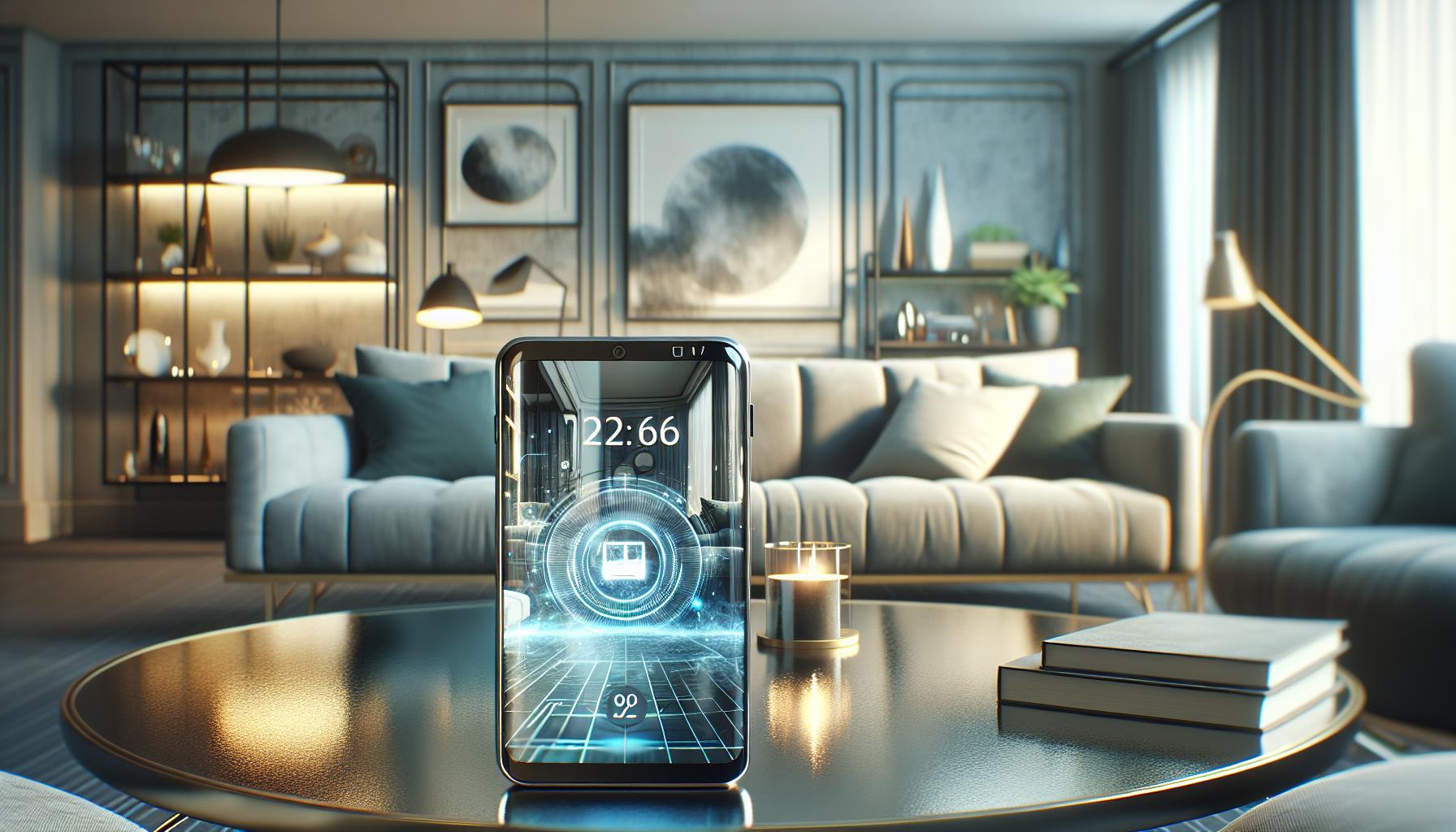Imagine holding a phone that doesn’t just connect you to the world but also transforms it right before your eyes. Augmented reality phones are the magic wands of the digital age, blending the real and virtual in ways that’ll make you question reality itself. With a simple swipe, your living room could become a dinosaur’s playground or a cozy cafe in Paris. Who needs a vacation when your phone can take you anywhere?
Augmented Reality Phone
Augmented reality phones integrate digital information and real-world environments seamlessly. These devices utilize cameras, sensors, and advanced software to overlay digital content onto physical surroundings. Users experience interactive features that enhance everyday activities, such as gaming, shopping, and learning.
Smartphones equipped with augmented reality capabilities provide unique applications. For instance, users can visualize furniture in their homes before purchasing, making informed decisions. Educational apps assist in understanding complex subjects by visualizing diagrams and 3D models.
Performance of augmented reality phones varies depending on hardware and software specifications. High-resolution displays enhance the visual experience, while powerful processors ensure smooth operation of graphics-intensive applications. Improved battery life supports extended use without frequent charging.
Market trends indicate rising consumer interest in augmented reality technology. Major manufacturers are investing in this sector, leading to innovation in smartphone capabilities. As a result, AR-enabled phones offer improved features, appealing to tech-savvy consumers.
Emerging technologies enhance augmented reality experiences continually. Advances in artificial intelligence and machine learning contribute to more realistic interactions. These developments broaden the applications of augmented reality, making it a valuable tool for various industries.
Augmented reality phones are set to redefine engagement with digital content. They promise exciting possibilities for entertainment, education, and industry-specific applications. As this technology evolves, users can expect richer experiences that blend the physical and virtual worlds.
Key Features Of Augmented Reality Phones

Augmented reality phones boast several distinctive features that enhance user experience, bridging the gap between digital and real-world environments.
Enhanced Display Technology
High-resolution displays dominate augmented reality phones, providing crisp visuals that elevate immersion. OLED and AMOLED technologies contribute vibrant colors and deep contrasts. These features allow users to engage with graphics as if they exist in their physical space, creating lifelike interactions. Furthermore, adaptive refresh rates assist in rendering smooth transitions during augmented experiences, reducing motion blur. This technology enhances gameplay and educational apps, making learning and entertainment highly engaging.
Integrated Sensors
Integrated sensors play a critical role in the functionality of augmented reality phones. Cameras, accelerometers, and gyroscopes work together to gather real-time data about surroundings. Optical sensors recognize surfaces and objects, enabling seamless overlay of digital content. These components contribute to spatial awareness, allowing users to manipulate virtual elements accurately. As a result, the integration of sensor technology improves applications across various areas, including navigation and interior design, enhancing practicality and user satisfaction.
User Interface Design
User interface design for augmented reality phones prioritizes simplicity and intuitiveness. Clear icons and interactive elements enhance usability, allowing users to interact effortlessly with virtual objects. Innovative gesture controls enable natural movements, which enhances the overall experience. Intuitive menus guide users in navigating apps without confusion. This focus on design ensures that engaging with augmented reality remains enjoyable, regardless of the user’s tech-savviness. Ultimately, standout interfaces solidify the appeal of augmented reality smartphones, inviting users to explore limitless possibilities.
Popular Augmented Reality Phone Models

Several smartphones on the market excel in augmented reality capabilities. High-quality models combine advanced hardware with innovative software to deliver immersive experiences.
Model Comparison
The iPhone 14 Pro boasts an A16 Bionic chip, enabling smooth AR performance. Samsung Galaxy S23 Ultra features a large AMOLED display, enhancing visual clarity during AR interactions. Google Pixel 7 utilizes specialized software like ARCore to optimize augmented reality applications. Each device caters to different user needs, from gaming enthusiasts to professionals seeking AR tools.
Real-World Applications
Augmented reality phones find utility across various sectors. Users employ them in retail to visualize furniture in their spaces before buying. In education, interactive AR apps help students grasp complex scientific concepts through visual simulations. In healthcare, professionals utilize AR for surgical planning, enhancing precision and efficiency. These practical applications demonstrate the technology’s diverse potential in everyday scenarios.
Benefits Of Using Augmented Reality Phones

Augmented reality phones enhance everyday experiences through interactive and immersive technology. Users can visualize products in their real-world environments, facilitating informed purchasing decisions. By integrating virtual elements with reality, these devices make shopping more engaging and personalized.
Learning becomes more dynamic with augmented reality applications. Complex subjects are simplified through interactive visuals, allowing users to grasp concepts more effectively. Educational tools, like anatomy apps, enable students to explore the human body in 3D, enhancing understanding.
Additionally, gaming experiences are enriched with augmented reality. Players engage with their surroundings in innovative ways, creating exciting gaming scenarios. Popular AR games encourage social interaction, connecting users with friends while remaining active.
In sectors like healthcare, augmented reality phones improve training methodologies. Medical professionals utilize AR for simulations, practicing procedures in a risk-free environment. Enhanced visualization techniques assist in patient monitoring and diagnostics, illustrating the technology’s impact.
Improved navigation applications leverage augmented reality to provide real-time directions. Users receive overlay information while exploring new locales, ensuring easier route navigation. Significant enhancements in travel experiences allow tourists to locate attractions quickly.
Over time, consistent advancements in augmented reality technology lead to smoother user experiences. Powerful processors and high-resolution displays deliver vibrant visuals essential for immersion. Manufacturers remain committed to refining AR capabilities, ensuring devices meet and exceed user expectations.
Lastly, augmented reality phones drive innovation across diverse industries. Retailers adopt AR to create virtual showrooms, transforming the consumer shopping landscape. As adoption increases, industries recognize augmented reality’s potential to reshape conventional practices and engage users more effectively.
Challenges And Limitations
Augmented reality phones face several challenges that impact user experience and technology adoption. One major hurdle involves hardware limitations. Not all smartphones possess the necessary processing power or sensors to deliver seamless AR experiences.
User interface design represents another challenge. While some applications prioritize simplicity, others confuse users with complicated interactions, which can reduce overall engagement.
Battery life emerges as a critical limitation. Running advanced AR applications drains batteries quickly, leading to interruptions during use. Users often find themselves needing to recharge frequently, diminishing the devices’ practicality.
Network connectivity also plays a vital role in AR performance. Dependable internet connections enhance the real-time data that AR applications require, but inconsistent connectivity can hinder functionality.
Privacy concerns act as another barrier. The extensive use of cameras and location tracking raises questions about data security. Users may hesitate to engage with AR technology if they perceive potential risks to their personal information.
Cost factors significantly affect consumer adoption. High-quality AR phones often come with premium price tags. Many potential users find it difficult to justify the expense, especially when traditional smartphones fulfill their needs adequately.
Lastly, the content availability presents obstacles. Despite growing interest in AR, the number of applications with meaningful AR integration remains limited. Users may feel discouraged without a diverse selection of engaging content.
These challenges collectively shape the landscape of augmented reality phones, influencing both user experiences and the technology’s future development.

